
Paraglider soaring above the spectacular hot springs of Pamukkale. Calcite-rich hot spring waters have formed an incredibly beautiful landscape of travertine. These terraced basins are covered in a brilliant white layer from recent calcium carbonate deposits. In Turkish, Pamukkale means “Cotton Castle”. This natural rock formation and the nearby Hierapolis Ancient City are a UNESCO World Heritage Site. Pamukkale, Denizli Province,Turkey.
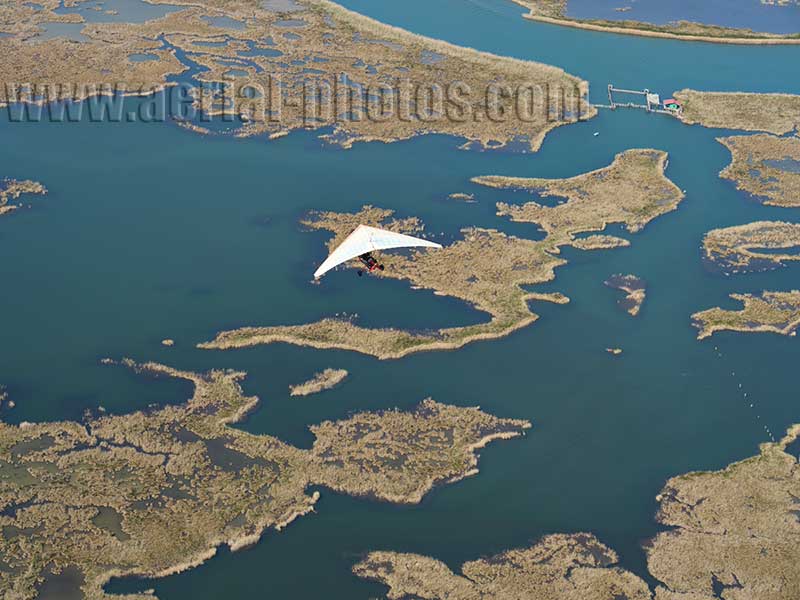
Ultralight trike (a motorized hang glider) flying above the abstract landscape of the Dalyan river delta. The delta is one of the many points of interest on the Turkish Riviera. The area offers not just a picturesque landscape, but also a rich history of early human settlement with the Ancient City of Kaunos. Dalyan, Muğla Province, Turkey.
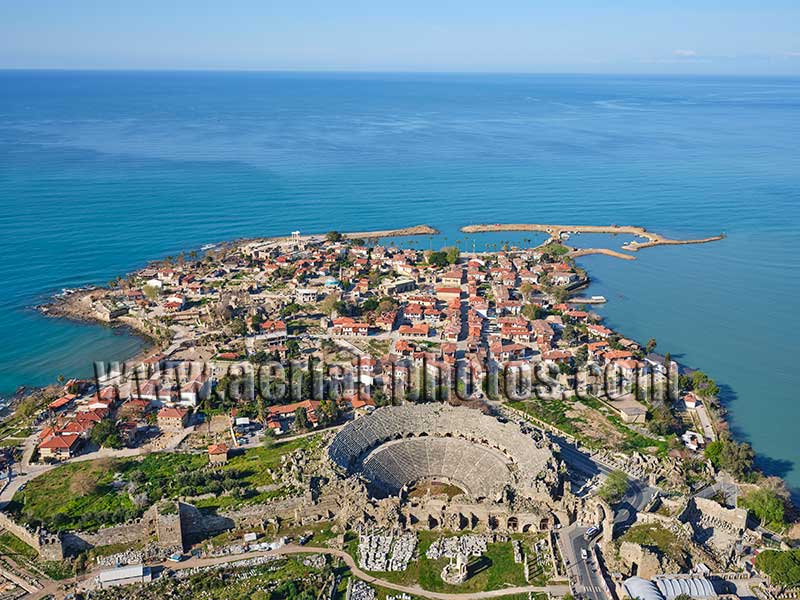
The Ancient City of Sidé is located on a peninsula about 65 kilometers east of Antalya on the Turkish Riviera. The city has a very long history that can be traced back, at least, to the 7th century BCE as evidenced by the excavation of a basalt column base. Sidé, Antalya Province, Turkey.
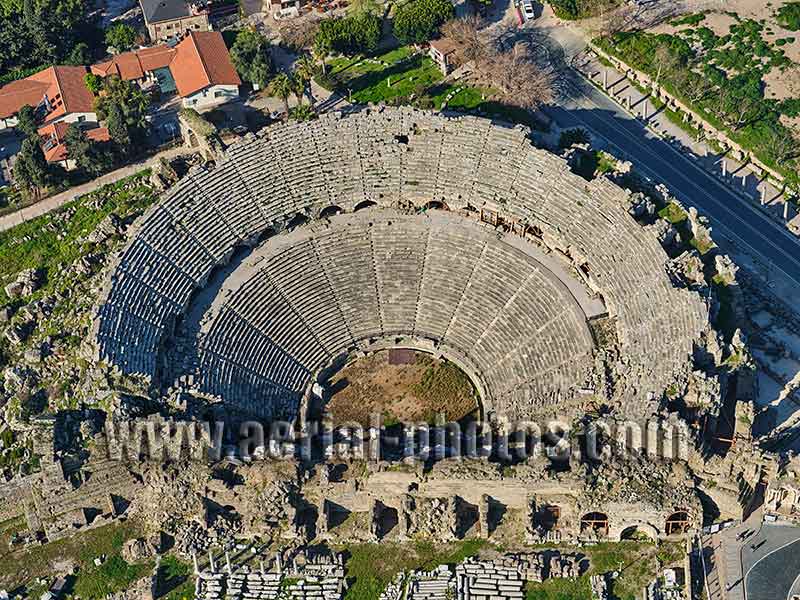
The most striking monument on the peninsula is the massive theater complex from the 2nd century. It has a seating capacity of 15,000 to 20,000. Sidé, Antalya Province, Turkey.
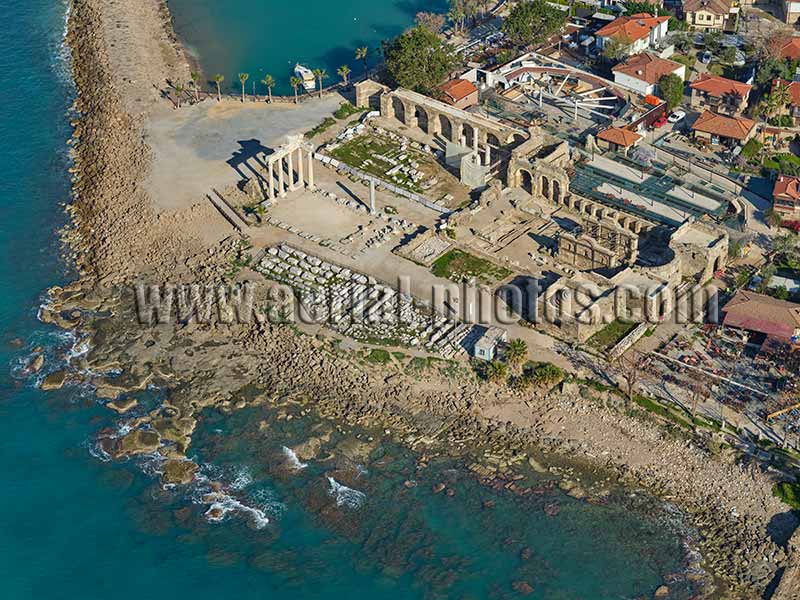
At the end of the Sidé peninsula, facing the Mediterranean Sea, stands the ruins of the Temple of Apollo with its five columns and entablature; it is a Roman temple built circa 150 CE during the Pax Romana era. It is dedicated to Apollo, the Greek and Roman god of music, harmony and light. The Temple of Athena is adjacent to the Temple of Apollo. Sidé, Antalya Province, Turkey.
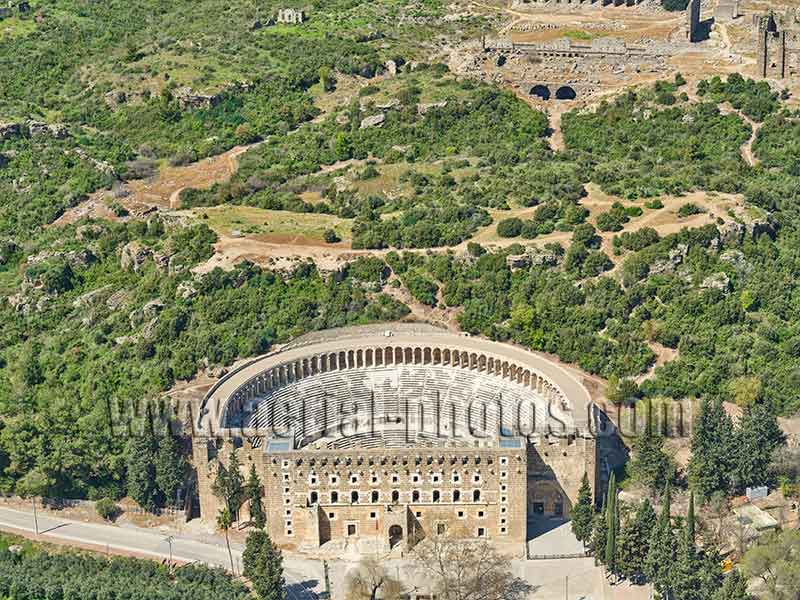
Aspendos was an important Greco-Roman city in the 5th century BCE. It was situated on the right bank of the Eurymedon River which at that time was navigable from the Mediterranean Sea about 16km away. In its early history, the site was ruled by Greeks, Persians and Romans. Serik, Antalya Province, Turkey.

The Aspendos Theater is the best preserved antique theater of Anatolia. Its imposing facade is about 100 meters wide. Serik, Antalya Province, Turkey.

The Hierapolis Theater is a Roman theater probably built under the reign of Hadrian (Roman emperor from 117 to 138 CE). Its facade is 91 meters wide and the auditorium has a seating capacity of 15,000. The entire Hierapolis Ancient City is a UNESCO World Heritage Site since 1988. Pamukkale, Denizli Province, Turkey.
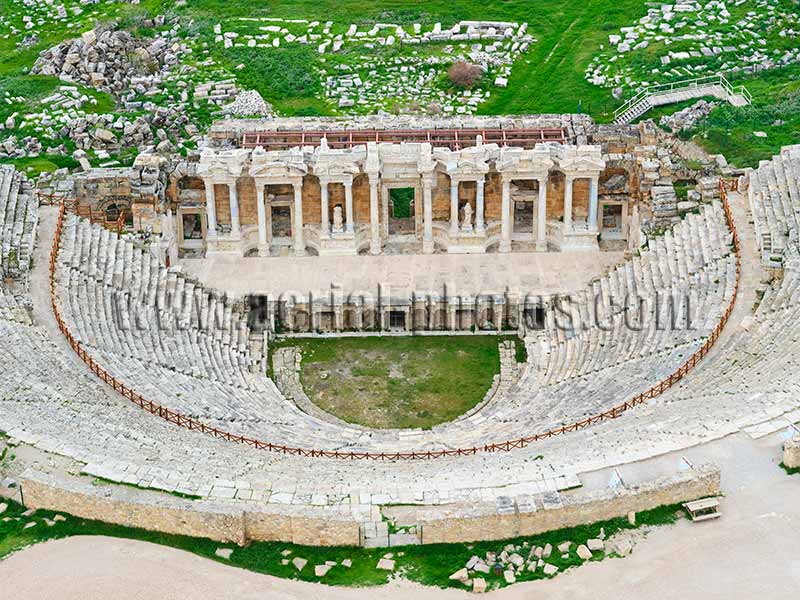
Hierapolis Theater. Pamukkale, Denizli Province, Turkey.

Kanthos (Ksantos in Turkish) is the most unique extant architectural example of the ancient Lycian Civilization. The oldest discoveries in the acropolis date back to the 8th century BCE. The site saw the establishment of different civilizations: Anatolian, Greek, Roman, and Byzantine, which have all left some architectural monuments. The site was added to the UNESCO World Heritage List in 1988. Kinik, Antalya Province, Turkey.

Myra was an important Lycian city whose history dates back to the 5th century BCE. Following the reign of the Lycian people, Greeks, Romans then Ottomans claimed the city of Myra and the rest of Anatolia. Its Roman theater, which is one of the best preserved in the region was destroyed in an earthquake in 141 CE and rebuilt afterward. It can hold approximately 11,000 people. Alakent, Antalya Province, Turkey.
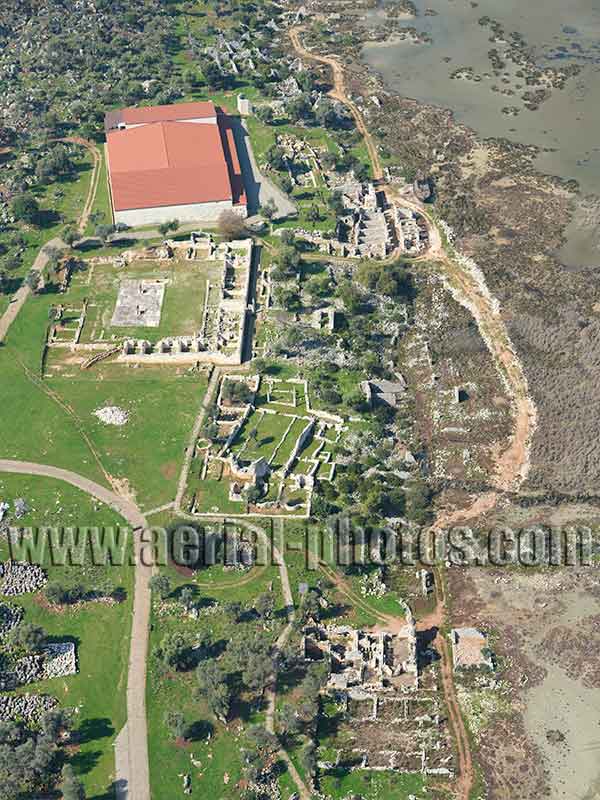
In the antiquity, Myra’s Andriake Port was one of the most important ports in the Lycian Region. With the silting of the small valley, the shoreline is now about 1 kilometer away from the port. Excavations have been carried out at Andriake since 2009 revealing the city foundation. The roofed building was a granary from the Roman era and was turned into a Museum of Lycian Civilization. Büyükkum, Antalya Province, Turkey.
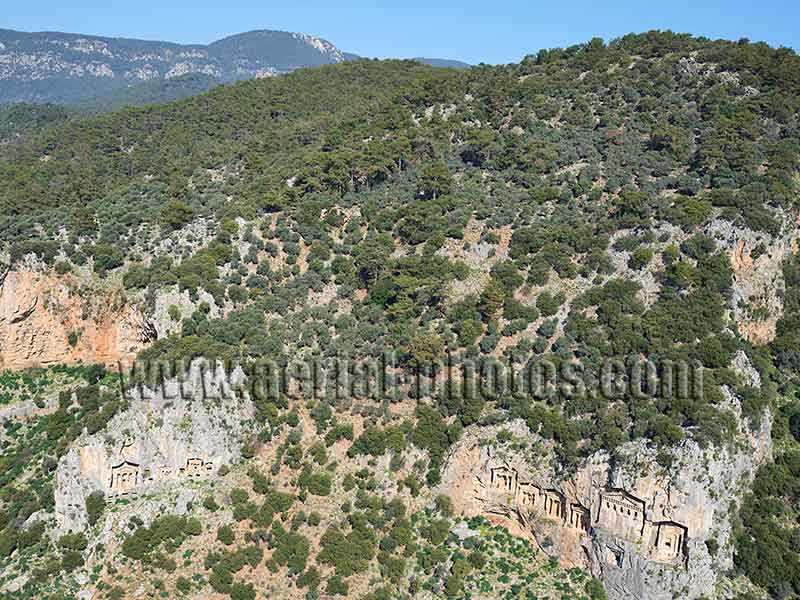
The Lycian tombs on the rock face of Baliklar Mountain above the city of Dalyan are the archeological highlights of the ancient city of Kaunos. They date back to the 4th century BCE. When the tombs were built, Dalyan was an important port city on the Mediterranean coast, but with the silting up of the bay by the Dalyan River, the coast is now about 8 kilometers away. Dalyan, Muğla Province, Turkey
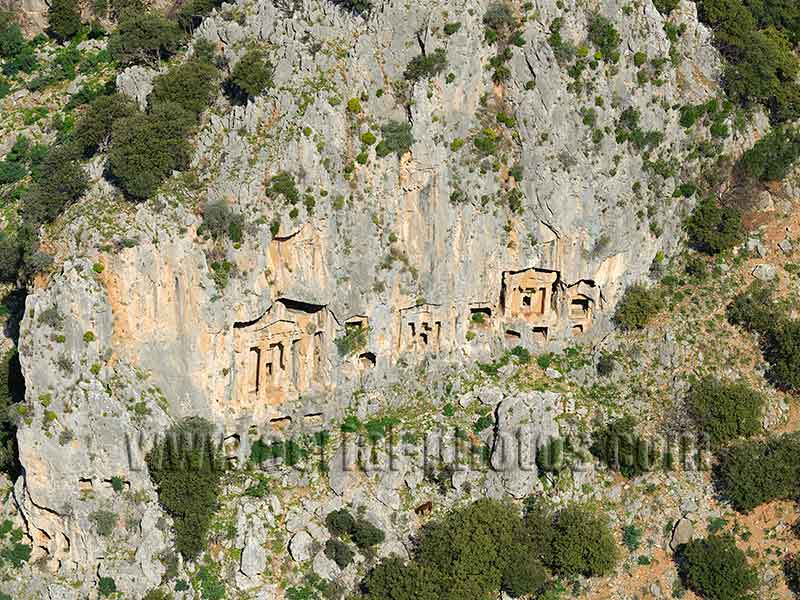
These rock-cut tombs resembling the fronts of Hellenistic temples were worked in the limestone cliff. The tombs and the oldest architectural finds in the ancient city of Kaunos do not predate the 4th century BCE, however a neck of an amphora dating back to the 9th century BCE, or even earlier was found on the site. Dalyan, Muğla Province, Turkey.
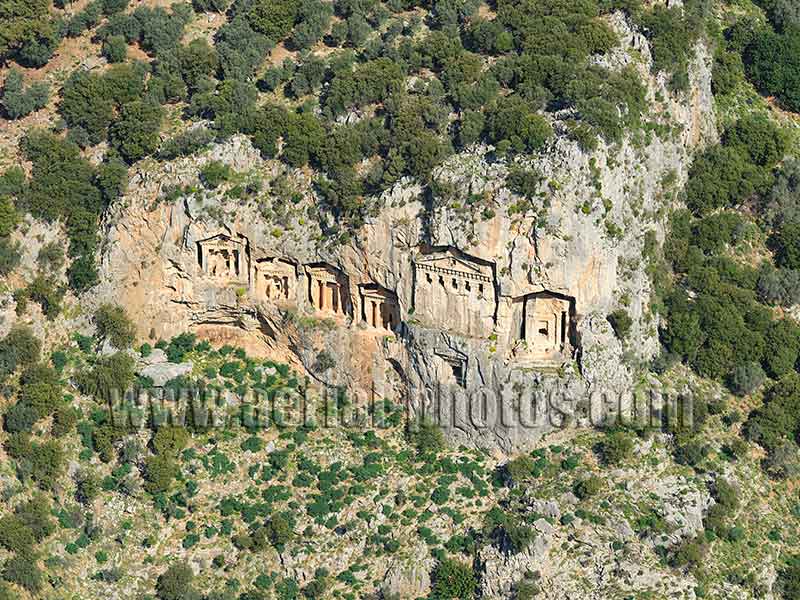
With the silting of the Bay of Dalyan that started around 200 BCE onwards, Kaunos was gradually losing its importance as a sea port. The 7th century CE brought Arabic invaders and the 13th century CE Turkish invaders. Kaunos was completely abandoned after the malaria epidemic of the 15th century CE. As of 2023, Kaunos is on the UNESCO World Heritage tentative list (submitted in 2014). Dalyan, Muğla Province, Turkey.

Kayaköy is a ghost town south of the seaside town of Fethiye. Kayaköy which means Rock Village (kaya köyü in Turkish) was built in the 18th century by a Greek community, it was then know as Levissi. Muğla Province, Turkey.
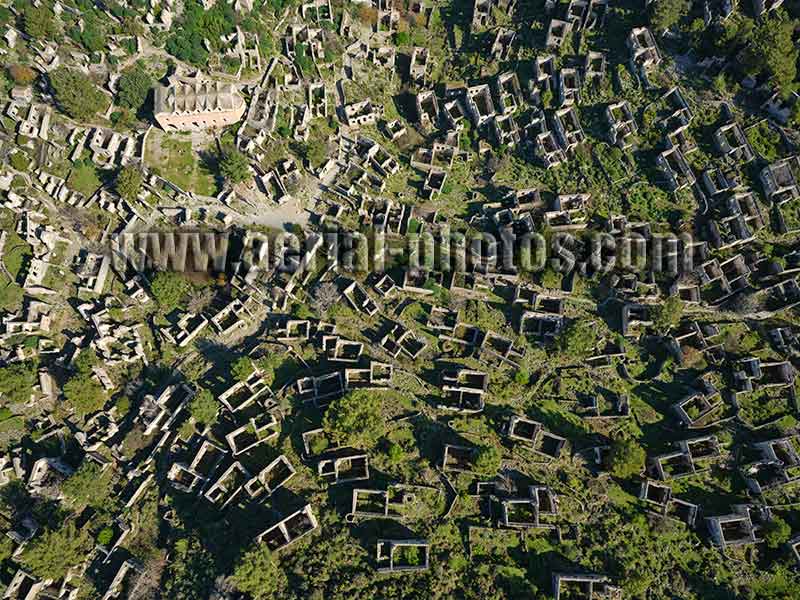
The residents of Kayaköy were Greek Orthodox Christians—the inhabitants of the region had become Christian following the East-West Schism with the Church of Rome in 1054. The town was progressively abandoned during World War I and the Greco-Turkish War of 1919–1922. The abandoned town was damaged in the 1957 Fethiye earthquake. Muğla Province, Turkey.
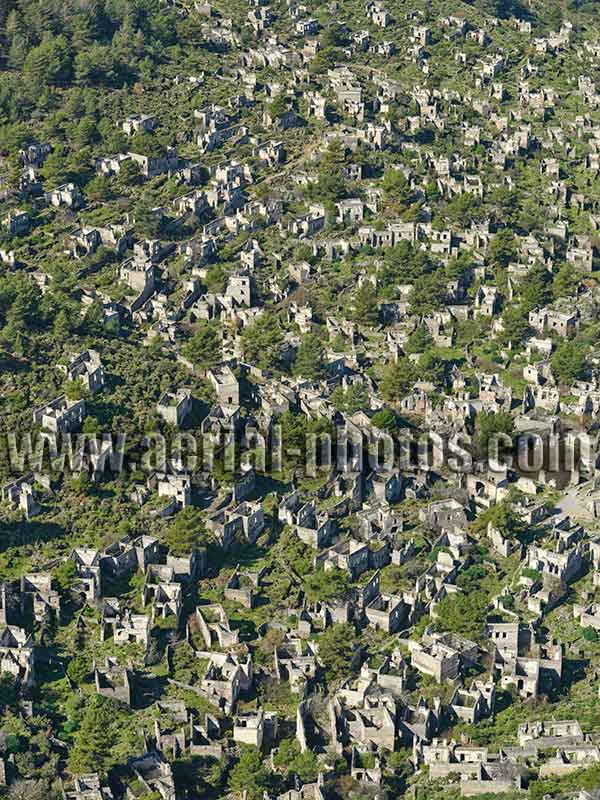
The open-air museum town presents a touristic interest and is located a short drive from Ölüdeniz which is a major tourist destination on the Turkish Riviera. The historic site is under the protection of the Turkish government. Muğla Province, Turkey.

Central Mosque Complex. Örnek, Antalya Province, Turkey.


















